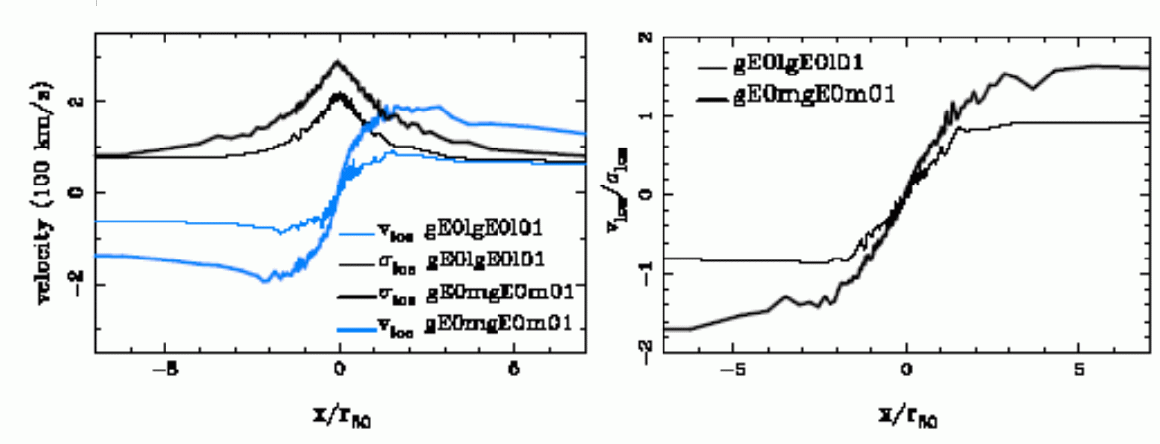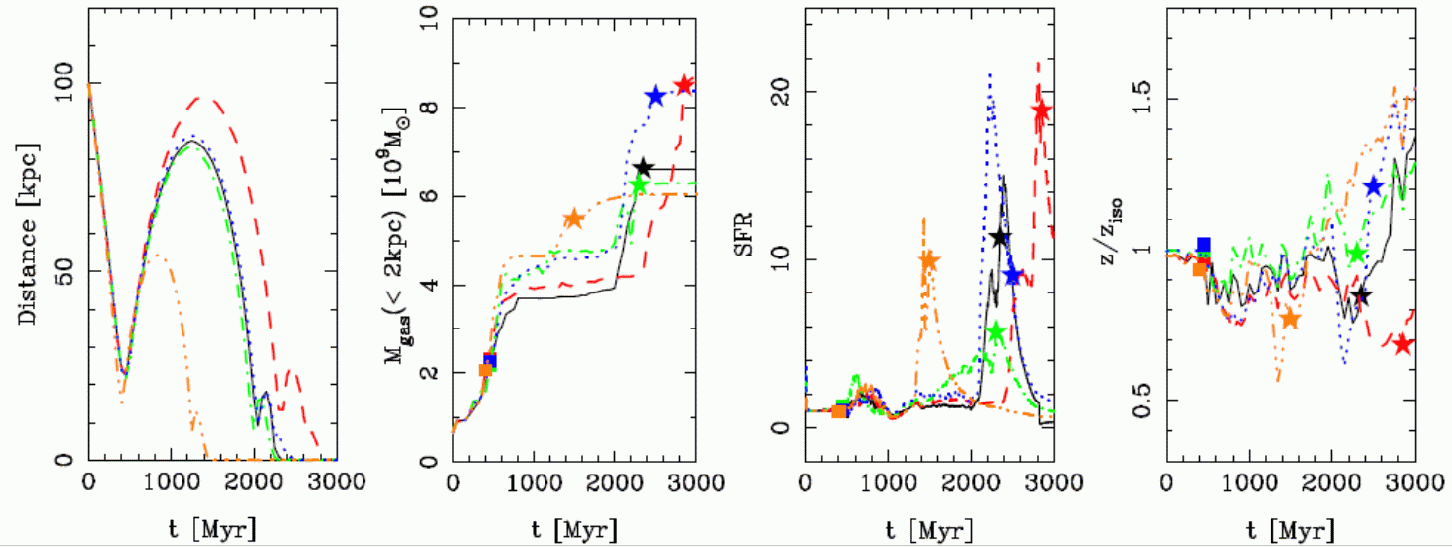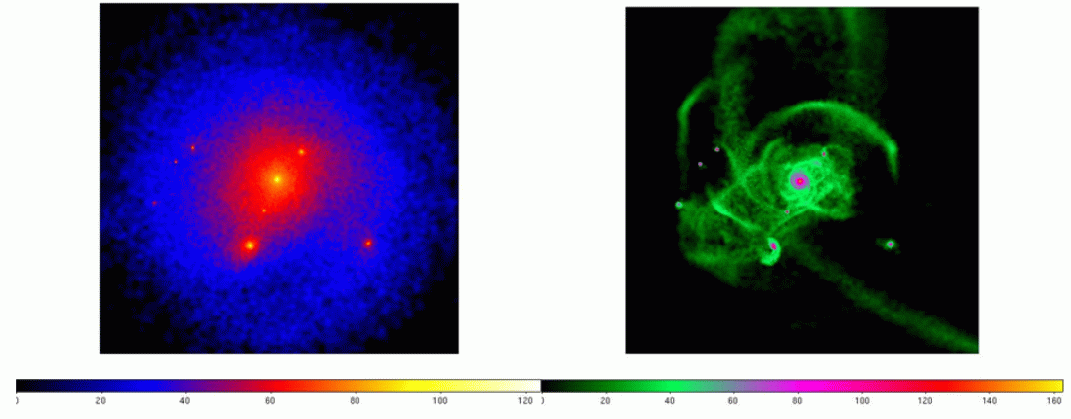|
|
Angular momentum transfer through galaxy interactions and mergers
Main topics
- Contributing to the library of idealised simulations, namely at high redshift

| |
Left: Line of sight velocity maps of the old stars in the elliptical (left panel) and Sa spiral (right panel) in a major merger, ending in a counter-rotating core, as can be seen from the inversion of colours (red-shifted and blushifted) on the right subpanel.
Middle: Rotation curves of the stars of the E-gal (red) of the spiral (blue) and the total (black), showing clearly the counter-rotation.
Right: Evolution with time of the orbital (full lines) and internal (dashed) angular momenta in the various components (Di Matteo et al 2008).
We want to enrich the library with galaxy interactions corresponding to what can be expected in the early universe.
|
- Deriving new detailed laws for the angular momentum transfer
|
The mergers of two elliptical galaxies, only supported by velocity dispersion, can give rise to rotationally supported systems, due to the transfer of
orbital angular momentum. Left are two Egal-Egal mergers: in blue the velocity curves, and in black the velocity dispersion.
Right shows the vrot/sigma curves, that reveal that the remnant are rotation dominated (from Di Matteo et al 2009).
Our goal is to provide key recipes for the semi-analytical modelling (SAM), in particular
we will derive physically justified and detailed laws for angular momentum redistribution:
dynamical friction, mass loss, stripping, mass and angular momentum exchange, physical properties of the merger remnants,
and the star formation efficiency,.
|

|
- Tracing the chronology of interactions through abundance gradients

| |
Monitoring the star formation and chemical dilution during galaxy mergers. Several major mergers with different orbits are shown with different
colours. First Left Panel: Relative distance of the two galaxy centres versus time.
Second Left Panel: Gas mass inside 2 kpc from one of the two galaxy centres.
Third Right panel: Evolution of the star-formation rate (SFR) relative to that for isolated galaxies.
Fourth Right Panel: Evolution of the central gas metallicity, also normalized to that of the same galaxies isolated.
Squares symbols represent the time of the first pericenter and asterisks the time of final coalescence for the different orbits (Montuori et al 2010).
Our goal is to develop and extend the chemical module and implement with more precision the monitoring of chemical abundances due to the various supernovae yields, and in particular be able to retrieve relative alpha/Fe ratios all over the galaxies. It will be possible also to date the various components, such as thick disk or stellar haloes.
|
- Outer relics, shells, tidal debris

|
External gas accretion by a high redshift galaxy.
Left, morphology of the stellar component.
Right, the gaseous component. Perturbed outer structures are formed around the accreting galaxies, with sizeable clumps. Some even form structures like dwarf galaxies, without dark matter.
We will implement new inventive schemes for the integration of a multi-phase ISM within state-of-the-art numerical simulations of both generic mergers and in a cosmological context in order to derive a robust description of the faint outer structures and small inner cores simultaneously.
|
|

